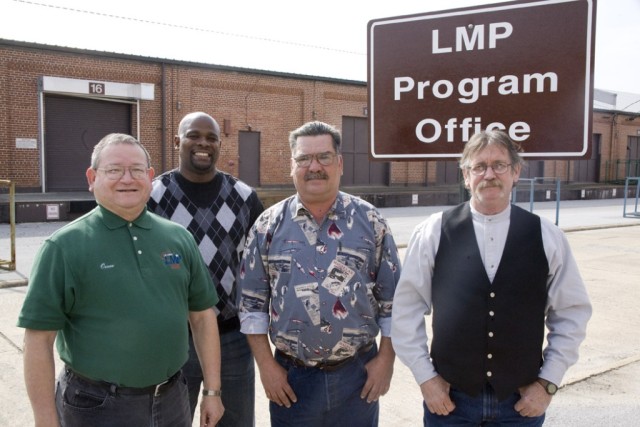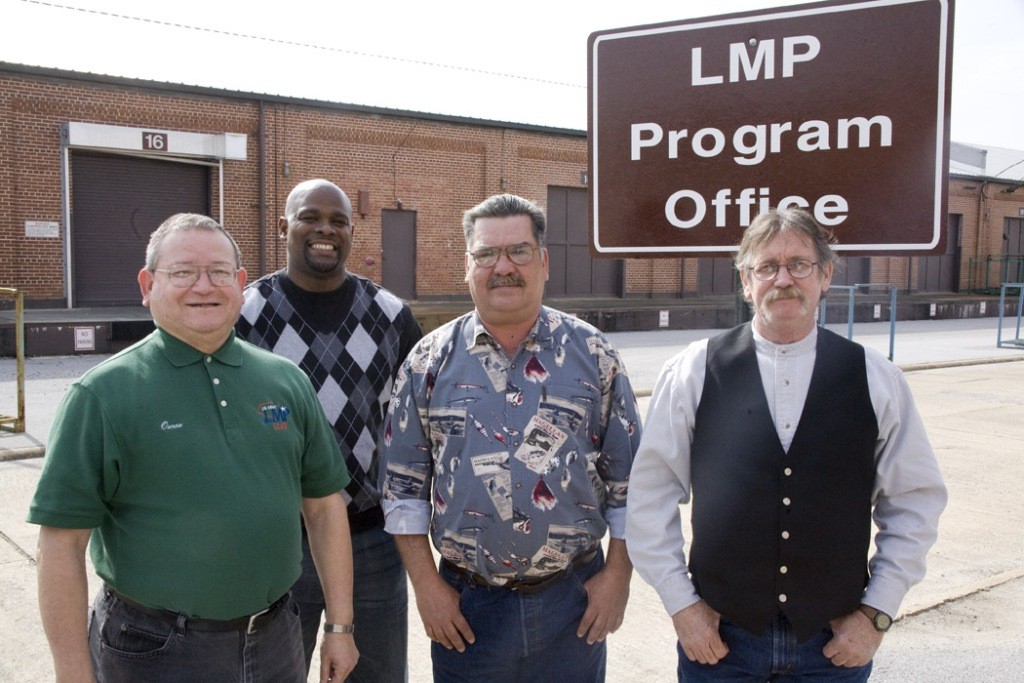ANNISTON ARMY DEPOT, Ala. - A sister depot in the Lone Star State is supporting operations here as Anniston Army Depot prepares to take part in Army Materiel Command's third and final deployment cycle of the Logistics Modernization Program.
Corpus Christi Army Depot, a maintenance depot in south Texas responsible for repairing and overhauling military aircraft, was part of AMC's second wave of conversions in May 2009, switching from the decades-old Standard Depot System to the new LMP business system.
In December 2009, leaders assigned four CCAD personnel to ANAD to assist with the planning of LMP implementation here, which is slated for Oct. 10, 2010.
"We're very excited to have the Corpus Christi support team on site and alongside our workforce so that we can benefit from the lessons they learned in their transition to assure that Anniston does not repeat errors made in the previous deployment," said Gilda Knighton, ANAD LMP business transformation manager.
LMP is replacing SDS as AMC's software system to bring about a synchronized feature to the input and output of data used in the materiel enterprise. As an enterprise resource planning system, LMP was created for the flow of real-time information as parts and equipment are ordered, produced and delivered to the customer.
In comparison, SDS does not offer instantaneous reporting. LMP assigns more accountability to Army personnel who order and use the parts and equipment needed in depot maintenance.
With CCAD employees settled here in the hub of LMP planning and training, they're leading group discussions - referred to as 'whistle stops' due to the marketing scheme centered on ANAD's LMP Train - to debunk flawed expectations and walk future LMP users through probable scenarios, said Knighton.
Ammo deploying with ANAD
Not only is CCAD supporting LMP operations within ANAD's combat vehicle and small arms manufacturing mission, the sister depot is also engrained in LMP functions at Anniston Defense Munitions Center, a tenant activity and subordinate of Joint Munitions Command.
ADMC performs its mission in the depot's ammunition limited area where Army civilians are storing, maintaining and recycling ammunition and missiles for the U.S. military.
"Preparing for and deploying LMP is a herculean effort," said ADMC Commander Lt. Col. Duncan MacMullen. "The team approach is the only way to succeed in this LMP deployment."
MacMullen said the Army has been given the opportunity to "make right and streamline all those archaic and management intensive systems and processes we've been using for decades."
ANAD began preparing for LMP as early as 2002 and has been able to follow the changes and challenges experienced by sites that have already deployed the new system.
CCAD's Jimmie Arceneaux said one of the biggest challenges for a depot implementing LMP is the workforce's understanding of the new roles in depot maintenance.
"At CCAD, changing job titles did change the way they thought about their work," said Arceneaux, who added the job title changes for production controllers let them concentrate on a specific job instead of doing all three.
With a workforce of more than 4,000, CCAD had planned for a 14-day maintenance shutdown to enter data into LMP while SDS was shut off. However, inputting what LMP users call "good data" allowed CCAD to start back after eight days, said Arceneaux.
Putting teams in place early and going into LMP implementation with an open mind are two of the things Arceneaux said helped CCAD. He said training is also essential.
Yndolfo Ramos, a CCAD parts management specialist, gave kudos to Anniston's training cadre, its business transformation team and its data cleansing group. These three divisions stood up operations in the depot's LMP Office in 2008. "This is a very professional group, which is a big plus to ANAD," said Ramos.
CCAD work zone scheduler Roy Jolly said ANAD is already doing many positive things that CCAD did to help with the SDS-LMP transition, such as taking the information to the shop floor (i.e. whistle stops) and getting the word out through "Word of the Day" e-mail messages.
He said it's vital that every worker on depot knows what is expected of him or her.
Jolly said the planning phase for both the depot and tenant ADMC are "showing high expectations" for a successful implementation.
Arceneaux said the approach to a productive LMP implementation is simple: Learn LMP just as we did for SDS.
From the top down, the workforce here is actively engaged in LMP to ensure its successful implementation.
Depot Commander Col. S. B. Keller said the installation is making adjustments in its current SDS operations to accommodate the work that must be done to prepare for the new system.
Workers at every level are making sacrifices to ensure that the ongoing production of vehicles and small arms continues while they ensure that training requirements are met and data is properly 'cleansed' for LMP.
"This will not be an easy task, but I am confident that ANAD's ability to rally together, rapidly seize new processes and technologies, then apply them to gained efficiencies in support of the warfighter, remains unchanged with our avid support to LMP fielding," said Keller.
"We're looking forward to the long-term benefits LMP will allow us to deliver to the joint warfighter," said MacMullen.


Social Sharing